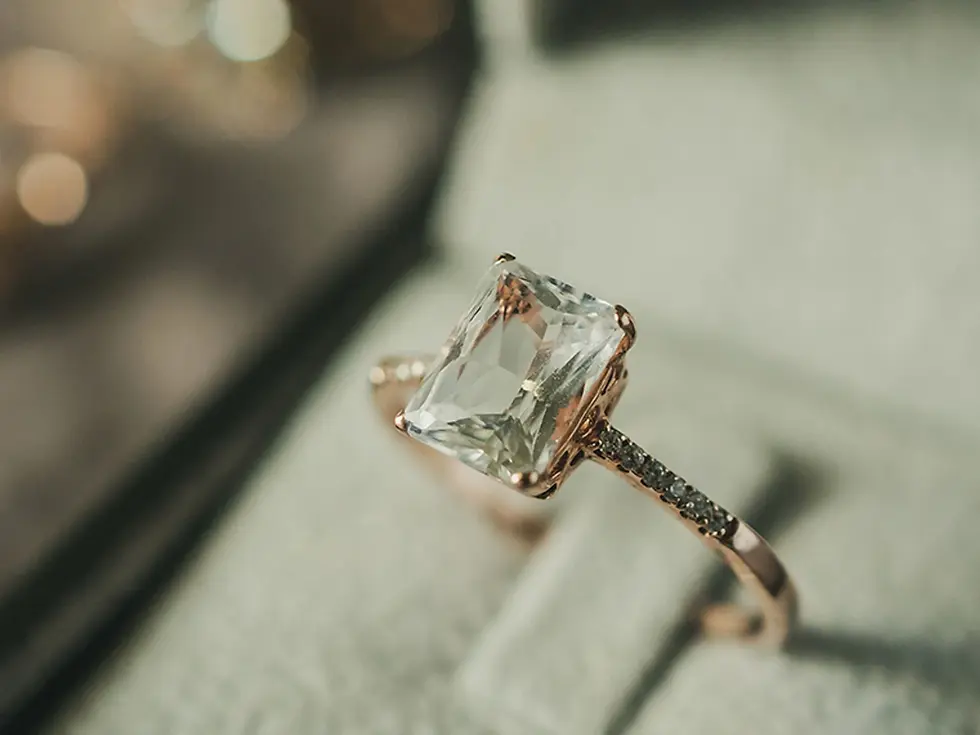The Ultimate Guide to Choosing the Perfect Engagement Ring
- Erika
- Mar 6
- 2 min read
An engagement ring is more than just a piece of jewelry—it’s a symbol of love, commitment, and the start of a beautiful journey together. With countless styles, settings, and gemstones available, finding the perfect ring can feel overwhelming. This guide will help you navigate the process and choose a ring that reflects your love story.
Step 1: Set a Budget
Before you begin shopping, determine how much you’re comfortable spending. While traditions suggest spending two to three months' salary, the right budget is one that suits your financial situation. Remember, a meaningful ring doesn’t have to be expensive.
Step 2: Learn About the 4Cs
If you’re considering a diamond engagement ring, understanding the 4Cs—Cut, Color, Clarity, and Carat weight—is crucial:
Cut: Determines how well the diamond reflects light, impacting its brilliance.
Color: Ranges from colorless to yellow; the less color, the higher the value.
Clarity: Refers to the presence of imperfections (inclusions); fewer inclusions mean better quality.
Carat Weight: Measures the size of the diamond; bigger isn’t always better, as cut quality affects sparkle more than size.

Step 3: Choose a Ring Style
Engagement rings come in various styles, each with its own charm:
Solitaire: A classic single stone that highlights the center gem.
Halo: A central diamond surrounded by smaller stones for added sparkle.
Three-Stone: Symbolizes past, present, and future love.
Vintage: Features intricate details inspired by historical designs.
Modern: Sleek, contemporary designs with unique settings.
Step 4: Pick the Right Metal
The metal of the band affects both the look and durability of the ring. Popular choices include:
Platinum: Durable and hypoallergenic, ideal for long-lasting wear.
White Gold: A stylish alternative to platinum, with a similar appearance.
Yellow Gold: A timeless, warm-toned metal.
Rose Gold: Romantic and trendy, with a vintage feel.

Step 5: Consider Alternative Gemstones
While diamonds are the traditional choice, many couples opt for alternative gemstones such as:
Sapphires: Durable and available in various colors.
Rubies: A bold and vibrant choice.
Emeralds: Unique and sophisticated, though slightly softer than other stones.
Moissanite: A budget-friendly diamond alternative with incredible sparkle.
Step 6: Get the Right Ring Size
Make sure you know your partner’s ring size to avoid resizing issues later. You can discreetly borrow one of their rings or ask friends and family for help.
Step 7: Buy from a Reputable Jeweler
Choose a jeweler with good reviews, certifications, and a solid return policy. Request a diamond grading report from a recognized gemological institute, such as GIA or AGS, to ensure authenticity.

Step 8: Personalize the Ring
Consider adding a personal touch, such as engraving a special message, choosing a unique setting, or incorporating a birthstone or heirloom gem.
Final Thoughts
Selecting an engagement ring is a significant decision, but it should be an enjoyable and meaningful experience. By understanding the basics and prioritizing your partner’s style and preferences, you’ll find a ring that symbolizes your love and commitment for years to come.



Comments